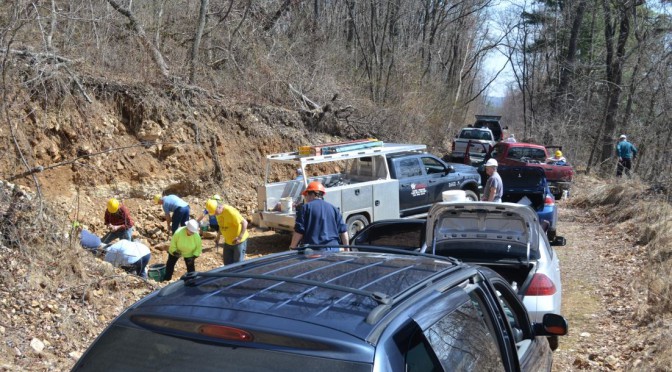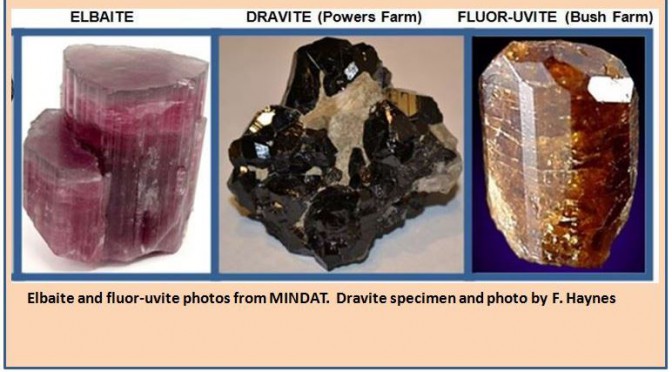This past week I had the pleasure of attending the Rochester Mineralogical Symposium at the Rochester Radisson Motel and Conference Center. It was the 41st annual such event, but it was my first! What a fine way to welcome spring weather and add encouragement and motivation for an active collecting season. Imagine well over 200 mineral enthusiasts converging for three days to share mineral stories, discuss technical learnings, sell/buy minerals, and otherwise just enjoy the company of others in the hobby.
Monthly Archives: April 2014
A Pennsylvania Excursion
Article I wrote for “Site of the Month” in May 2014 WCGMC News
Technically, Mount Pleasant Mills is not in New York, but I am going to claim editor’s license to divert this month’s “Site of the Month” south of the border and to invoke multiple sites. You see, on April 12th and 13th, thirteen Wayne County Club members gathered up their passports and headed south across the border in search of warmer weather and mineral/fossil treasure. We found both!
With temperatures well into the 70’s, the group converged on National Limestone Quarry in Mount Pleasant Mills where we were cheerfully greeted by the quarry owner Eric Stahl, who had cleared the road to the ridge atop the quarry in anticipation of our visit. Up we went, backing in the final section until we were all lined up adjacent to one of the wavellite spots atop the hill and collecting commenced (see cover photo).
Tourmalines
An article I wrote for the April, 2014 WCGMC News (www.wcgmc.org)
ALL TOURMALINES ARE NOT CREATED EQUAL
When we venture to Ace of Diamonds to dig clear quartz crystals we are seeking a very simple mineral, silicon dioxide (SiO2). Just simple SiO4 tetrahedrons joined together with each large oxygen atom shared by two small silica atoms in a six-sided prism, ideally terminated by 6-sided pyramids. And when we seek that elusive fluorite at the annual Walworth Quarry dig, it is just calcium and fluorine combined into a cubic lattice motif with Ca atoms centrally located and F at the corners. This time each of the 8 fluorine corner cube atoms are shared by four unit cells with the formula CaF2. In both minerals inclusions generate color variations which get neat names (like amethyst or citrine). Of course, quartz can twin or show spectre form, but there is no elemental substitutions of note into the lattice of either mineral, and there are no solid solutions to confuse collectors: just simple SiO2 or CaF2, just quartz and fluorite.
It is not as simple with tourmaline. When we travel north to St. Lawrence County to collect dravite at Powers Farm, or fluor-uvite at Bush Farm or Selleck Road we are focusing our attention on one of the most complex mineral structures known. The mineral lattice of tourmaline actually has five structural sites where elements can be swapped and traded, six if you count the rare substitutions of aluminum or boron into the Si site. These substitutions can be complete or partial, and often occur in zonal patterns such that the center of the crystals actually may qualify as distinct minerals from their outside layers.

